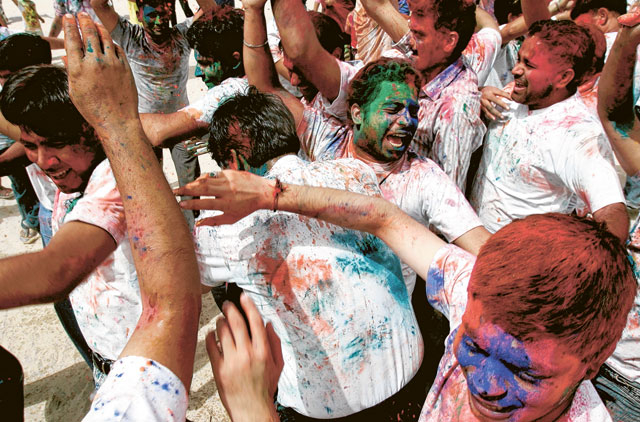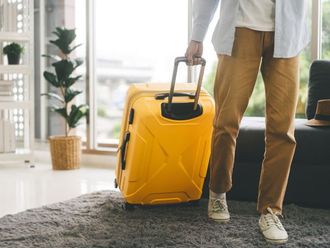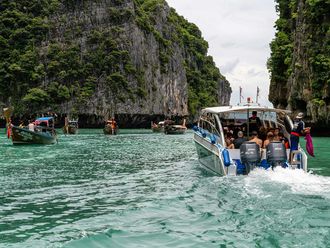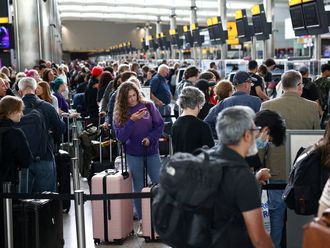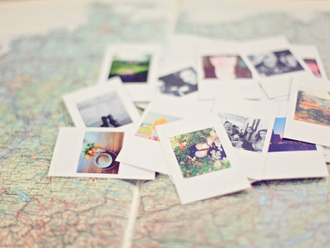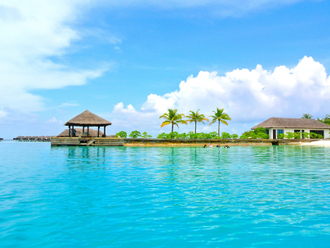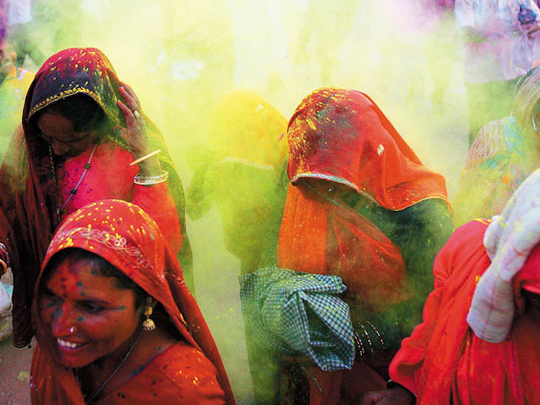
On March 8 and 9, the streets in India will be painted in all hues with the colours of Holi. Traditionally a Hindu festival, over the years it has broken barriers and people of all religions participate in the festivities. The marketplaces and streets are strewn with vendors selling heaps of colours (abeer), multi-coloured pichkaris (waterguns) and sweets traditionally eaten during the time.
It is also an excellent time to visit the country, as the weather hasn't yet started warming up, and if it is culture and history you seek, it, literally, bursts in multi-colours around every street corner.
"The best time to visit India is from October to March, primarily because the weather is good in the north and the south, and you even get snow-covered parts in the country. Rajasthan, particularly, is a good place to visit, as it gets warmer during summer," says Vikas Rastogi, Dubai-based regional director (west Asia and Africa) for India Tourism.
Mainly celebrated in the northern states of India, Holi rituals differ only slightly from state to state. On the first day, bonfires are lit using dried cowdung cakes, wood and dried leaves to represent the burning of Holika, and the next day people drench each other in colours and water, sing folk songs, dance to the beat of the dhol and eat sweet and savoury snacks, visiting each other's homes in large groups. Nature-friendly people play with natural colours and water coloured with dried yellow tesu flowers that grow on the palash tree (flame of the forest), or just with flowers. However, beware of those who find merriment in using paint, mud and grease, and dishes and drinks laced with bhang (cannabis). A fun-filled festival, most indiscretions are permitted, but limits are set individually. The main excuse is that the Indian deity Krishna played pranks on Radha (known to be his platonic friend) and other gopikas (milkmaids), and so the male population feels entitled to do the same. The playful deity was probably the one who started the festival. Legend has it that Krishna, being dark-skinned, was jealous of Radha's fair complexion and would smear her face with different colours to annoy her.
"The idea is to throw colour, coloured water and flowers on each other," Rastogi agrees. "But some places the spirit of the festival gets distorted. People use paints and other stuff which is not easy to wash off. But if you go to Mathura, Barsana and nearby areas, we have the best celebrations of Holi, because this, being the birthplace of the Krishna, is where the typical celebrations take place. About 15,000 to 20,000 people play Holi together. Lots of people come here during the time only because it involves a lot of folk art and folk music. But other festivals, such as Diwali, Pongal and Eid are also celebrated the same way. So if you want to catch the real India, it is best to plan an itinerary during festival time. However, come with an open mind and understand that we are a very warm and friendly people, and when we throw colours on each other, one should take it in a light and a good-natured way.
"India has so many official languages with hundreds of dialects, religions, folklore and art," Rastogi says. "We have so many indigenous communities that something or the other is on at all times of the year. With the millions of deities that we worship, we have a festival every day, whether you are in Jaipur, Udaipur, Madhya Pradesh, Nagaland, Mizoram or in the south. So if you want to really experience India, breathe India, live India, savour India, the best opportunity to do so is when we have a festival. These are family affairs. We cook good food, and if you go to the market you will find something really attractive happening all the time. Holi, Diwali, Eid, Christmas, Independence Day, New Year's Eve — are all mass celebrations. It does not matter whether you are a Muslim, Hindu, Christian or Sikh — we celebrate all of these together."
Country of diversity
"The beauty of India is that it is one country that can give you so many seasons," says Vikas Rastogi, Dubai-based regional director (west Asia and Africa), India Tourism. "It is one country that can give you so many destinations. It is one country that can take you to the Himalayan heights, to the desert, to the beach, to the plains, to the islands, to wildlife — any time of the year, because something or the other is always happening somewhere in the country, and all regions can be done within three to four hours of flight. It is a 365-day destination.
"It caters to the uberrich, and has some of the finest and most luxurious hotels. We have the palace and heritage hotels. We have some of the most expensive and beautiful spas in the world. You can charter a flight, take a train, or road transport of any kind. It is a family destination as well. But it caters to the budget traveller too. If you want to go trekking or mountain climbing in the Himalayas, river rafting, camping in the Valley of Flowers, or to the beach, you can backpack. There's nothing more beautiful than pitching a tent in a meadow full of flowers. When you are 18,000 feet above the sea, traversing the highest roads in the world, camping in the Valley of Flowers, obviously, you wouldn't do it for just two days. On an average the length of time a tourist spends in India is 28 days, because once you are here, you get lost in it and you want that time. So we do have a lot of backpackers from Germany, Spain, the UK and America, but India is not only for the backpackers."
Triumph of good over evil
- Along with being the festival of colours, Holi is a celebration of good over evil. The legend goes thus: Hiranyakashyap is an evil king who propitiates Lord Shiva and earns a boon that he will not die at the hands of either man, woman or animal, either during day or night, or with any kind of weapon, fire, air or water, and that not a drop of his blood will touch the earth. He begins considering himself God and forces everyone to worship him. But in a twist of fate, he begets a son who is an ardent devotee of Lord Vishnu, the Saviour in the Hindu Trinity. Angered, he tries to kill Prahlad, his son, by making him enter a fire with his aunt Holika. He is, however, blessed and does not burn. It is Holika who dies. Lord Vishnu then takes the form of Narasimha — half-man, half-lion — and kills Hiranyakashyap with his bare hands at twilight and drinks all his blood before it can touch the ground. As he dies, Hiranyakashyap asks Lord Vishnu for redemption. Prahlad is then crowned king and rules justly and with compassion.


